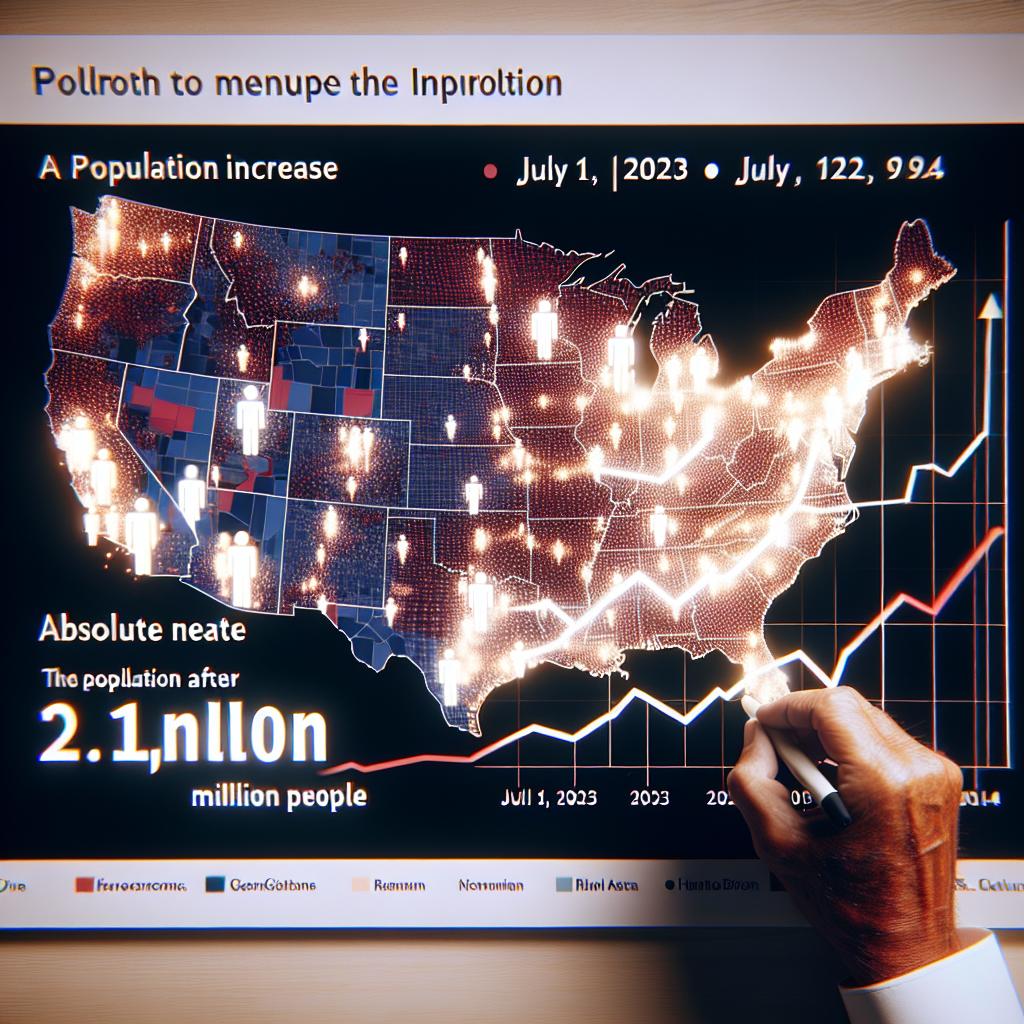According to the latest report from the U.S. Census Bureau, the population growth rate in metropolitan areas in the United States between July 1, 2023, and July 1, 2024, exceeded the national average, increasing by nearly 3.2 million people, a growth rate of about 1.1%, reaching a total population of 293.9 million. The total population of the entire United States increased by almost 1%, reaching over 340 million people.
Expert Kristie Wilder from the Census Bureau’s Population Division stated, “The population growth in U.S. metropolitan areas is increasingly influenced by international migration.” International net migration brought nearly 2.7 million residents to U.S. metropolitan areas, a significant increase from the previous year’s 2.2 million, while natural population growth (births minus deaths) contributed about 600,000 people.
Data shows that 60% of metropolitan areas experienced natural population growth, while around 59% of metropolitan areas had domestic net migration (more people moving into the area from other parts of the U.S. than leaving).
Among the top 10 metropolitan areas with the highest population growth rates in the U.S., nine are located in the southern region and one in the western region, with the top two both in Florida. In the micropolitan areas (with populations ranging from 10,000 to 49,999 people), seven of the top 10 fastest-growing areas are in the southern region, with the top two in Georgia and Florida.
Out of the 387 metropolitan areas in the United States, nearly 90% experienced population growth, an increase from the previous year’s 82%. Metropolitan areas that saw population declines during the pandemic, such as the New York-Newark-Jersey City, Washington-Arlington-Alexandria, and San Francisco-Oakland-Fremont areas, have all rebounded with population growth.
In terms of population numbers, the five metropolitan areas with the largest population increases are: New York-Newark-Jersey City (increase of 213,403 people), Houston-The Woodlands-Sugar Land (increase of 198,171 people), Dallas-Fort Worth-Arlington (increase of 177,922 people), Miami-Fort Lauderdale-West Palm Beach (increase of 123,471 people), and Washington-Arlington-Alexandria (increase of 90,608 people).
The top five metropolitan areas in terms of population growth rates are: Ocala, Florida (4% increase), Panama City Beach, Florida (3.8% increase), Myrtle Beach-Conway-North Myrtle Beach, South Carolina (3.8% increase), Lakeland-Winter Haven, Florida (3.5% increase), and Provo-Orem-Lehi, Utah (3% increase).
Looking at county populations, 65.3% of the population in the 3,144 counties in the U.S. increased. Large counties (with populations over 100,000) saw an average population growth of 1.1%, while some of the smallest counties generally experienced population losses.
As of July 1, 2024, the top 10 most populous counties in the U.S. were: Los Angeles County (9,757,179 people), Cook County, where Chicago is located (5,182,617 people), Harris County, where Houston is located (5,009,302 people), Maricopa County, where Phoenix is located (4,673,096 people), San Diego County, California (3,298,799 people), Orange County, California (3,170,435 people), Miami-Dade County, Florida (2,838,461 people), Dallas County, Texas (2,656,028 people), Kings County, Brooklyn, New York City (2,617,631 people), and Riverside County, California (2,529,933 people).
The counties with the highest population growth rates (with populations over 20,000) are: Dawson County, Georgia (6.4% increase), Kaufman County, Texas (6% increase), Jasper County, South Carolina (5.9% increase), Jackson County, Georgia (5.8% increase), and Pinal County, Arizona (5.6% increase).
The Census Bureau is expected to release population estimates for cities and towns on July 1, 2024, in May, further revealing how post-pandemic population migration and birth trends are reshaping communities across the United States.

